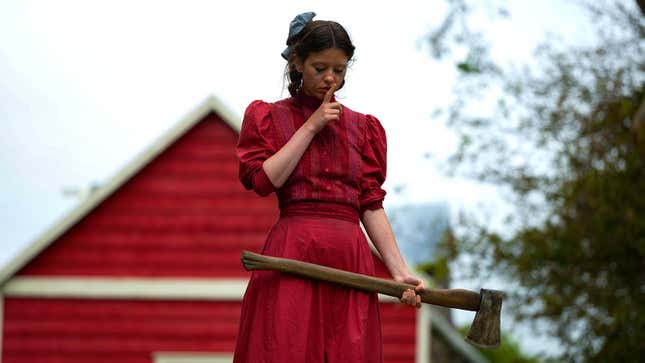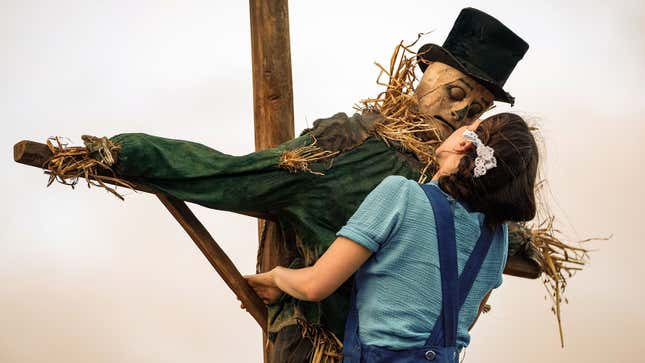Weirdness Alone Can’t Carry Horror Prequel ‘Pearl’
In this outrageous origin story to X, Mia Goth's Pearl has sex with a scarecrow and befriends a hungry alligator.
EntertainmentMovies

It’s hard to imagine encountering a major movie release as eccentric as Ti West’s Pearl again this year—or any year, for that matter. A prequel to his slasher X, which hit theaters mere months ago, Pearl breaks form and then hacks it to bits. Unlike X, which took place in the ‘70s and attempted to recreate the grittiness of that era’s exploitation cinema, Pearl takes place in 1918 but its references are more temporally varied. The Wizard of Oz (1939) is a major influence here, which is never more explicit than in a scene in which titular protagonist Pearl (Mia Goth, who co-wrote the script with West) dances with and ends up riding to orgasm a scarecrow she finds posted in a cornfield. The endlessly emotive and string-led score, as well as the putative investment in Pearl’s interiority, were influenced by the “woman’s film” melodramas that reached the height of their popularity around World War II.
Oh, and Pearl is a murderer with some sort of undiagnosed mental illness.
-

-

-

-

-

-

-

-

-

-

-

-

-

-

-

-

-

-

-

-

-

-

-

-

-

-

-

-

-

-

-

-

-

-

-

-

-

-

-

-









































